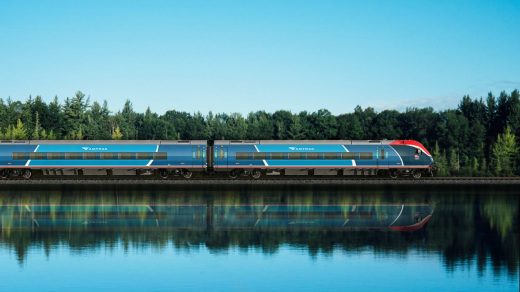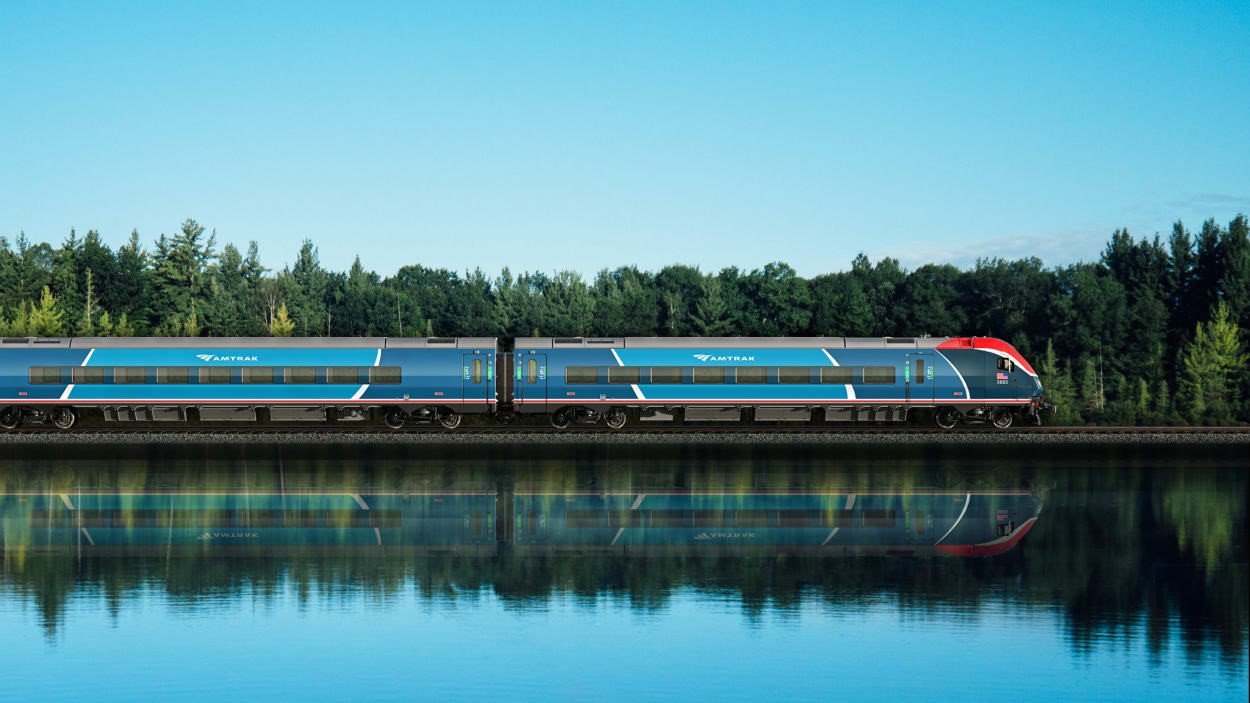The U.S. is having a rail travel renaissance, but you probably didn’t notice
You can hear them as they plug in their devices at their seat. You can hear them as they pass through the hissing automatic doors between cars. You can hear them as they enter the spacious, sparkling restrooms.
“Wow.” “Nice.” “Is this a new train?”
To which I reply to my fellow passengers, “Yes. Yes, it is.”
Siemens Venture cabs started rolling onto Amtrak Midwest routes in 2022, and by now they’re a ubiquitous sight in this corner of the Amtrak system. These are the same cab cars used by the privately owned Brightline system in Florida, and are considered the top of the line for passenger rail in North America. Northeast Corridor riders won’t be able to experience the new train smell until 2026, since the Airo trains slated for those routes keep getting delayed.
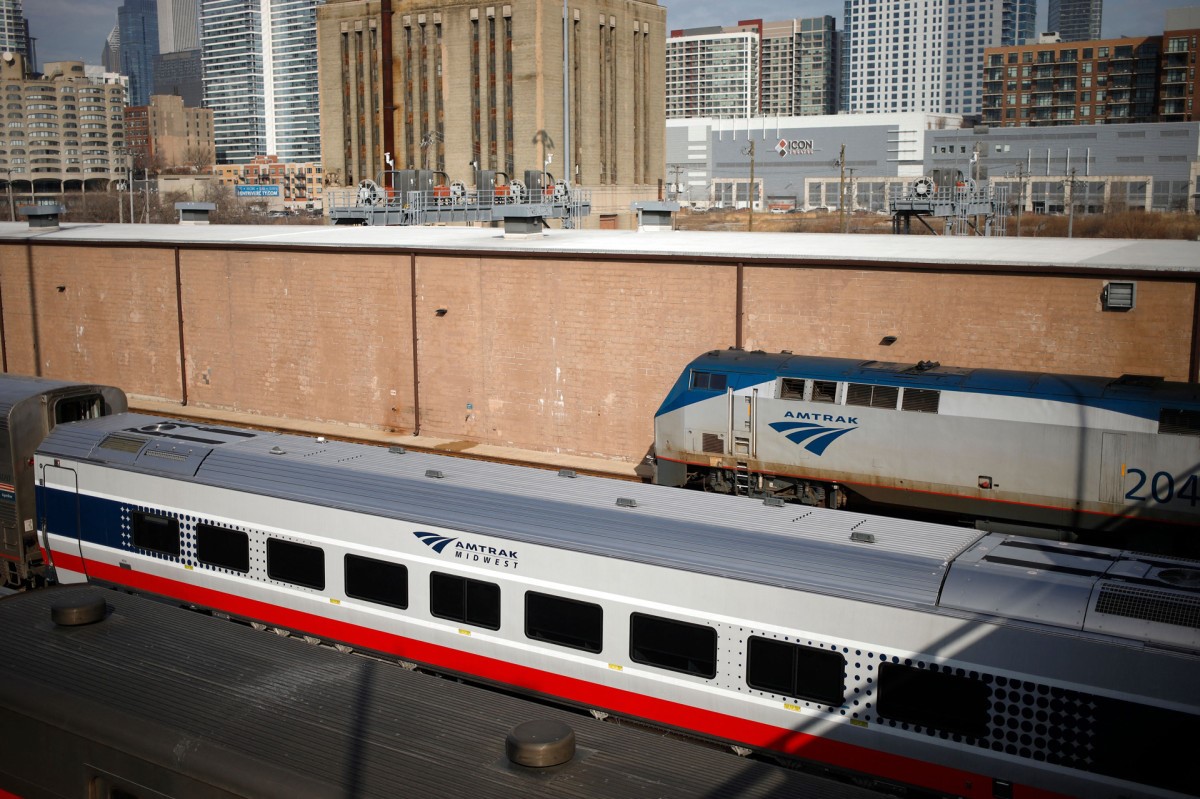
For once, the future came early to the Midwest. Riding in these new train cars, as I did on four journeys this month, the excitement around the revival of passenger rail is palpable. State-of-the-art rolling stock is the most vivid sign that train travel is no nostalgia trip. It’s modern, it’s efficient, it’s comfortable, and it’s only getting better.
Better is the operative word here. The Infrastructure Bill’s $66 billion investment in trains, combined with improvements that were already in the works, will not yield revolutionary changes to passenger rail. But over the next few years, these investments will lead to faster, more frequent, more comfortable, and more widespread service across the country. On several rail-friendly corridors—big city pairs less than 300 miles apart—train travel will go from an eccentric travel option to a perfectly logical one.
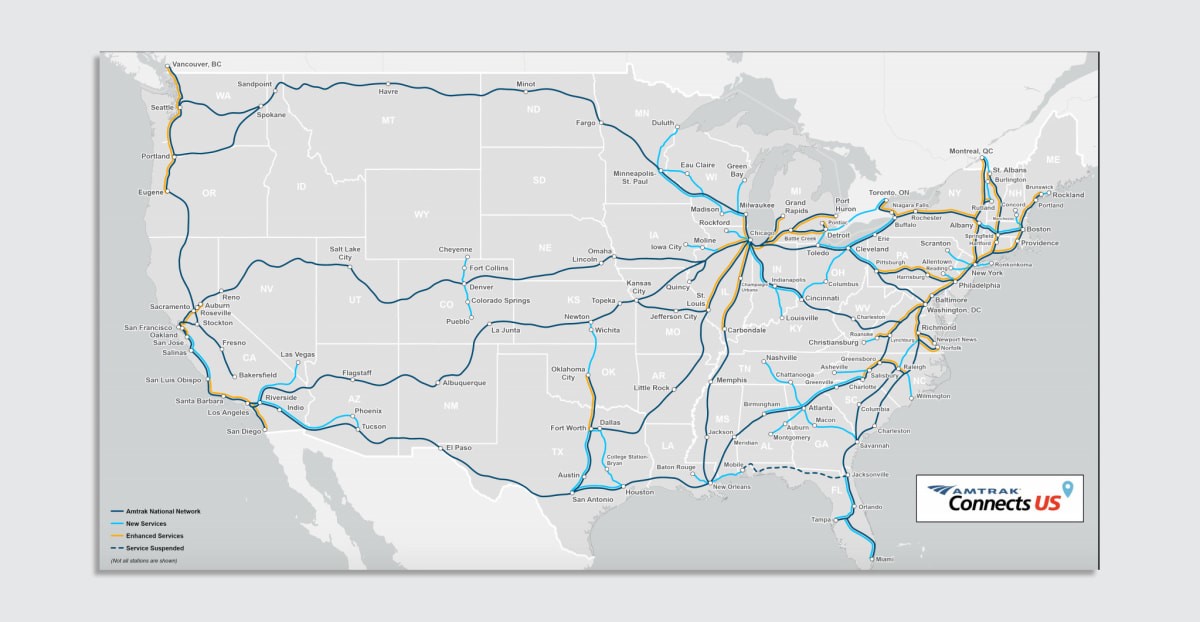
That vision of the not-so-distant future starts to crystallize as you survey major inter-city passenger rail improvements underway, or with a feasible path to fruition. These improvements to conventional passenger rail—as opposed to 150-mph-or-faster high-speed rail—don’t get a lot of attention in the media. But they will cumulatively impact the lives of many more Americans, much sooner, than multigenerational infrastructure projects like California High-Speed Rail.
Here are some of the biggest projects to watch:
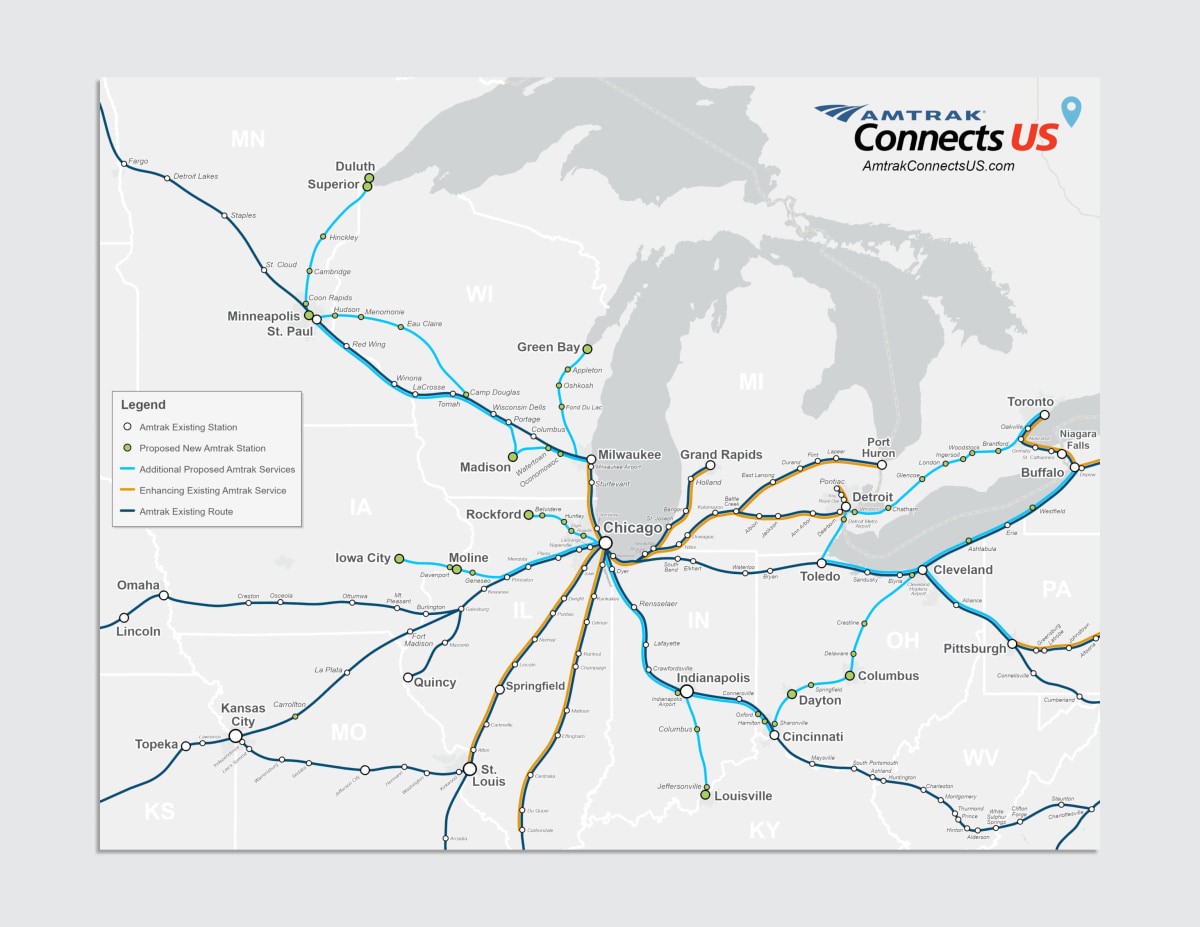
Illinois
Illinois and Amtrak are cobbling together federal grants to renovate Chicago Union Station, the beating heart of America’s passenger rail system. This complex slate of projects would improve operations and the passenger experience at the station. But more importantly, these projects would lay the groundwork for dramatic increases in passenger rail service across the Midwest, creating the potential for through-running trains connecting, say, Indianapolis and Milwaukee via Chicago. Today, all intercity trains that enter Chicago terminate there, meaning passengers must transfer trains to travel to other destinations. Additionally, Illinois recently upgraded much of the line connecting Chicago and St. Louis for 110-mph train service, shaving 30 minutes off the trip.
Minnesota
Minnesota is expanding service between St. Paul and Chicago by 2026, and is studying much more significant upgrades that would dramatically increase speed and frequency on the corridor. This would also lead to enhanced service through Wisconsin. With a Democratic trifecta in the statehouse, the Minnesota state legislature this year appropriated funds to begin developing the Northern Lights Express, a new route connecting the Twin Cities and Duluth.
Michigan
Michigan is in the unique position of owning long stretches of track. It has taken advantage of this by upgrading a 45-mile section of the Detroit-Chicago Wolverine corridor to 110-mph speeds, and has an even longer 110-mph segment under development. The state also owns a long north-south rail line from Ann Arbor to Traverse City that is being studied for rail service. Another corridor under study would link Detroit, Lansing, and Grand Rapids.
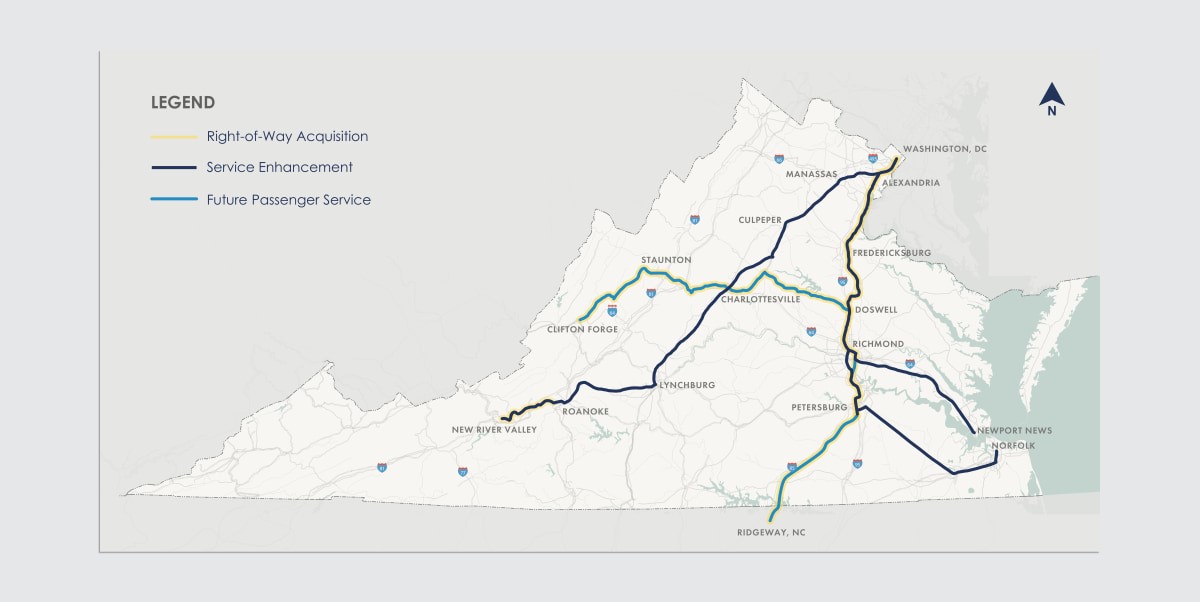
Virginia
Virginia is America’s great unsung passenger rail hero. In 2021, the state took the unprecedented step of purchasing more than 300 miles of track from a freight rail operator, including most of the track on which its existing passenger trains currently travel. The state is working to upgrade key sections of track for higher speeds and more service. A new bridge across the Potomac will enable two times more service between Washington, D.C., and Richmond, with trains as frequent as every hour.
North Carolina
North Carolina, along with Virginia, has secured a federal grant to begin a new direct rail service connecting Raleigh to Richmond and the Northeast Corridor beyond. This line would connect to the recently upgraded state-owned Piedmont Corridor, which links Raleigh to Durham, Greensboro, and Charlotte.
Florida
Florida is beginning planning work on new tracks that could eventually connect Brightline’s recently opened Orlando Airport station to Tampa. This complex project would be a partnership between SunRail, Central Florida’s commuter rail operator, and Brightline, offering transfers between the two systems and creating new stations at or near major theme parks like Universal Studios and Walt Disney World. From there, Brightline could be extended along Interstate-4 to Tampa, at which point the privately owned railroad would serve Florida’s three largest metro areas.
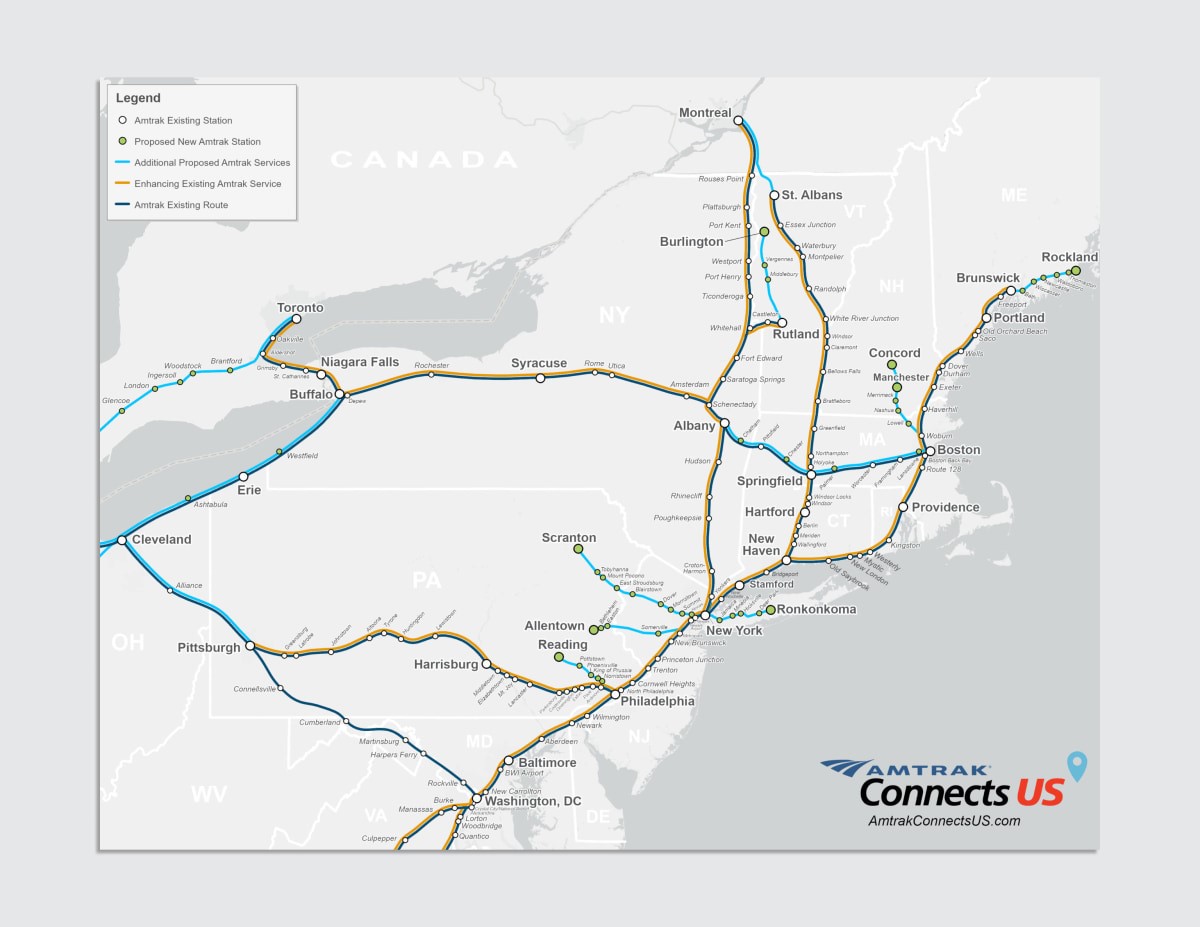
Massachusetts
Massachusetts just won a federal grant to upgrade track connecting Boston and Springfield in Western Massachusetts. The project will enable trains to travel at speeds of 80 mph, and will make the train trip between the two cities competitive with driving. It also lays the groundwork for much more frequent trips going east/west across the state.
New York State
New York State has several ongoing improvement projects on its Empire Corridor linking New York City, Albany, Rochester, and Buffalo. In February, the state released an environmental impact report for a comprehensive slate of upgrades that would reduce travel times from NYC to Albany to under two hours. The plan also envisions a doubling of service between NYC and Buffalo.
Pennsylvania
Pennsylvania just authorized a plan to upgrade tracks in order to add another daily round trip between Pittsburgh and New York City via Harrisburg and Philadelphia. A new service between Scranton and NYC is also under development.
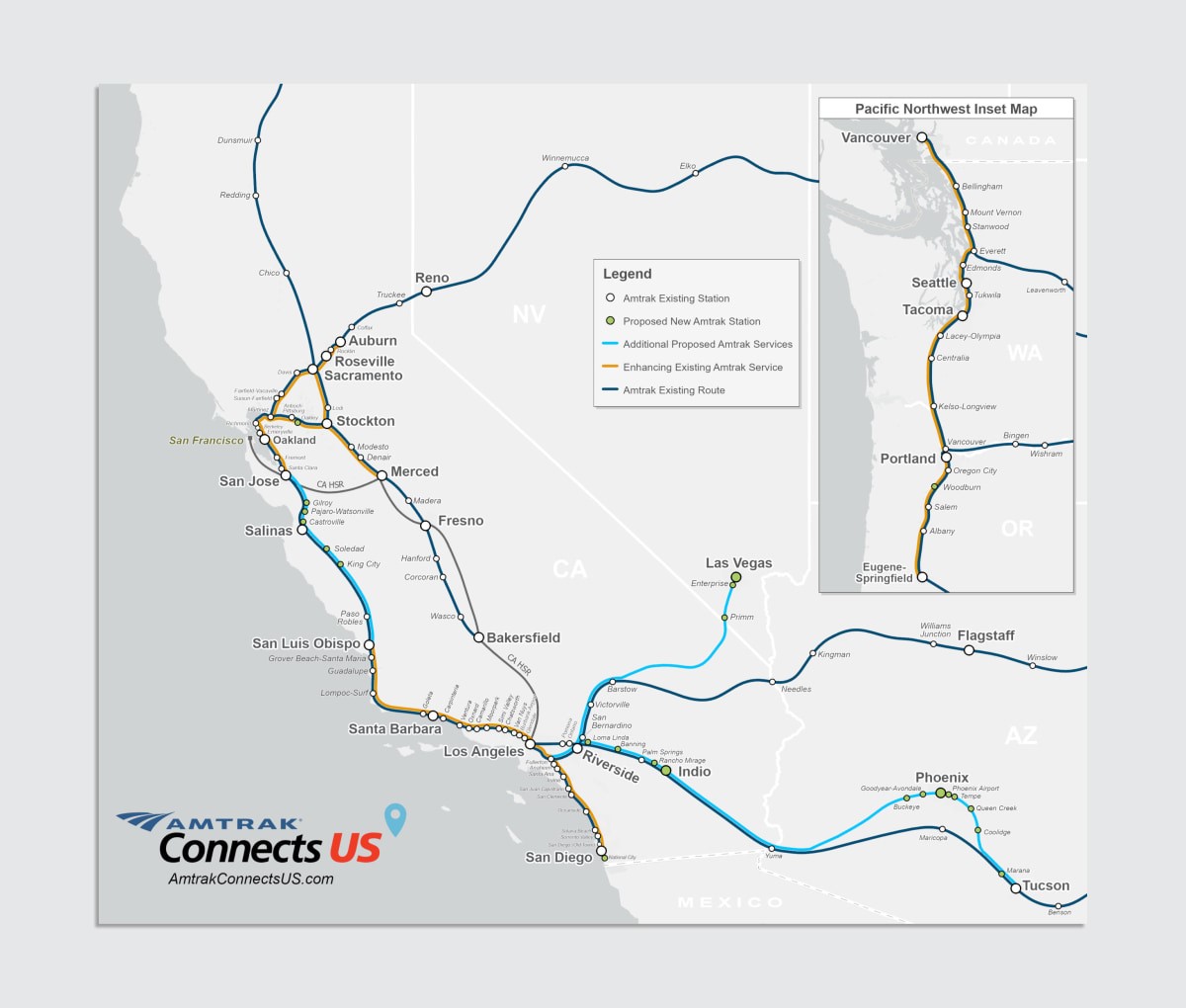
California
California is always talking about improving passenger rail. Tons of projects are in planning stages—including a new route from Los Angeles to the Coachella Valley—though it’s unclear which will move forward or when. The most significant near-term improvements could include increased service on the popular L.A.-San Diego route. The Altamont Corridor Express train connecting San Jose and the East Bay to the Central Valley is currently getting extended to Merced, where it will provide a transfer to the initial segment of California High-Speed Rail. And the Capitol Corridor service just won a federal grant to increase service from Sacramento to its northern suburbs.
Washington State
Washington State days ago released a service vision for the Cascades route, envisioning as many as 16 trains per day connecting Seattle and Portland, as well as increased service to Vancouver, Canada, and Eugene, Oregon. The plan would require major infrastructure upgrades on the largely freight-owned right of way, which would eventually result in significant speed improvements.
Colorado
Colorado is quickly moving ahead with planning on the Front Range line, which would link all the state’s major population centers, including Pueblo, Colorado Springs, Denver, Boulder, and Fort Collins, as well as nearby Cheyenne, Wyoming. Colorado Governor Jared Polis has championed this project, and could put forth a ballot measure seeking funding as soon as next year.
This story was republished with permission from Urben Field Notes.
(7)

